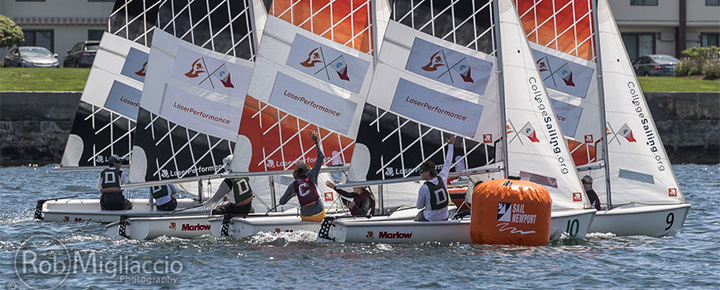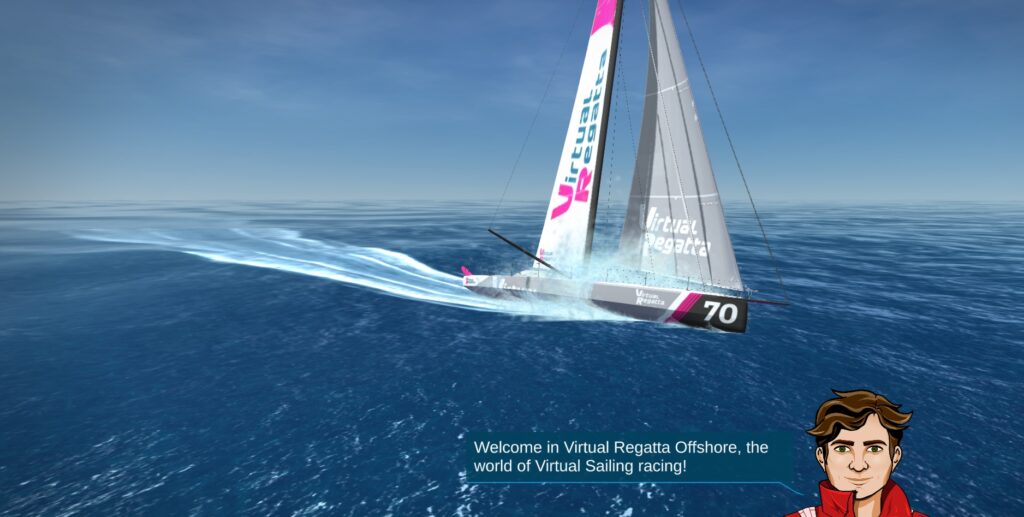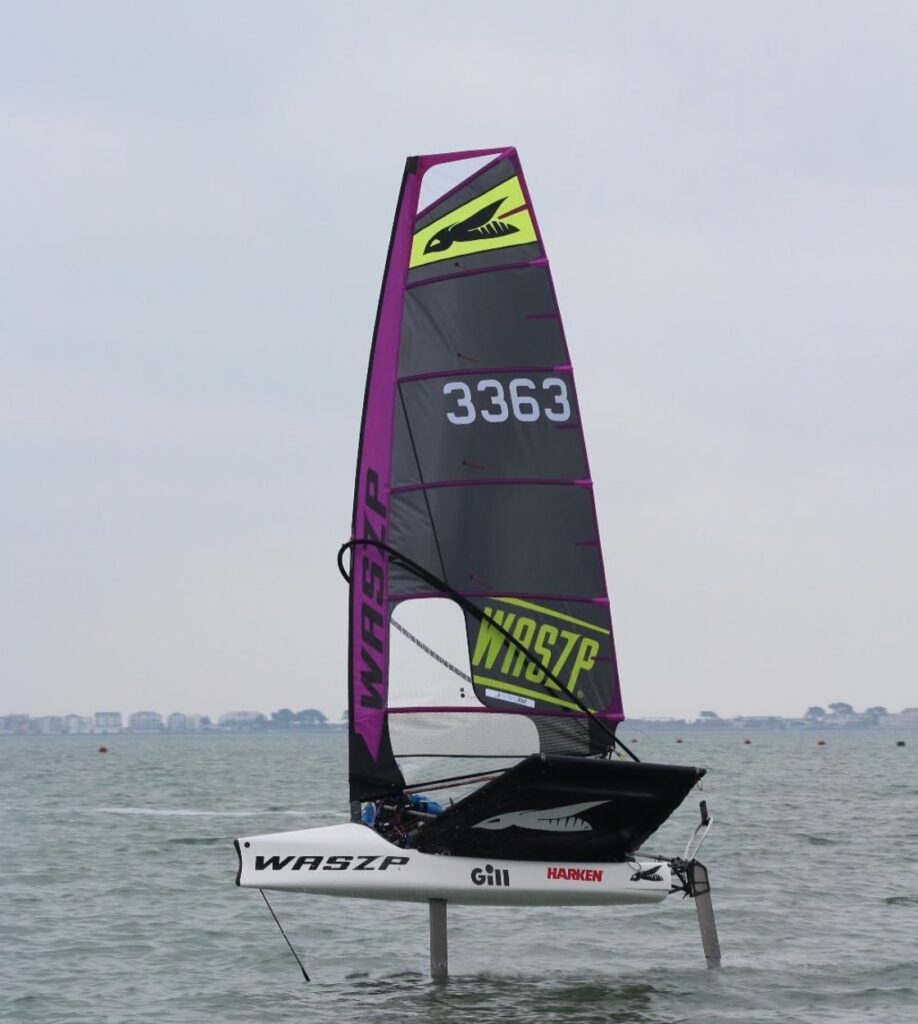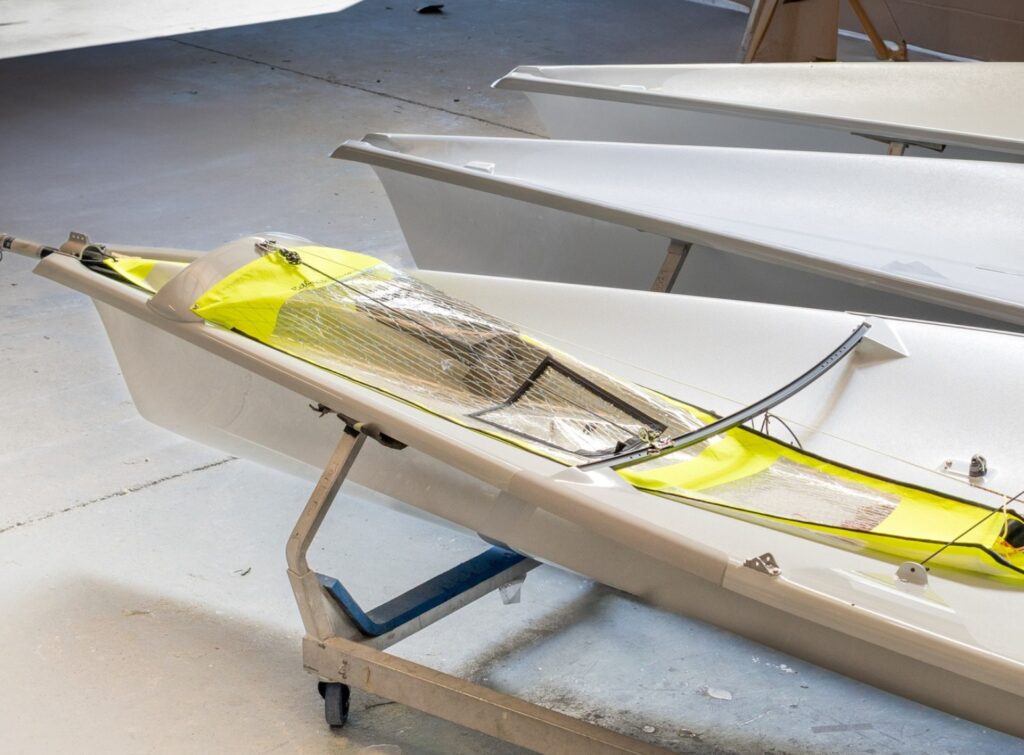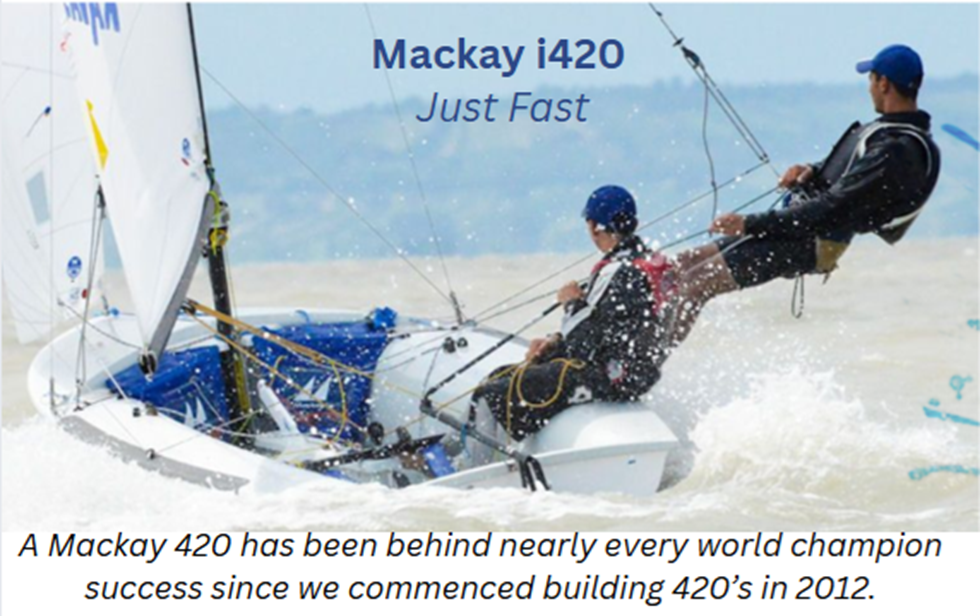By Airwaves Writer Ty Olsen
TCO: Peter it is safe to say that you have had an extensive sailing career so far, with way too many accolades to mention. With all the directions that you could turn your focus, why did you choose the weather and the importance it plays on the racecourse?
PI: It all began when I first started as a junior sailor. Right away, I realized the importance of weather and how it shaped every aspect of sailing. Back then, my limited understanding was just the tip of the iceberg compared to what I know now—but even then, I knew it was something that was important to being a successful sailor.

As my sailing career took off and I headed to college, I had a wild idea: Why not major in sailing? Well, that wasn’t exactly an option, so I went for the next best thing—weather and meteorology. Little did I know, at Yale, meteorology wasn’t just about watching weather charts and tracking high and low pressures—it was hardcore physics, fluid dynamics, and complex computations! And as fate would have it, I found myself in many of the same classes as my roommate, the legendary sailor Stan Honey.
It was a deep dive into the science of air and water molecules, and while it was intense, it gave me an incredible foundation. That knowledge became a game-changer as I transitioned into a tactician role. The more I got into competitive sailing, the more I realized just how crucial detailed weather analysis was. I made it my mission to stay ahead of the curve, constantly pushing the boundaries of what I could learn and apply.
Then came COVID—a time of uncertainty, but also an opportunity. Chris Bedford and I finally had the time to bring a long-time dream to life. That’s when we decided to collaborate on starting The Marine Weather University. After a lifetime of being dedicated to the study of weather and its impact on sailing, I now had a way to share that knowledge with others. It’s been an incredible journey, and I couldn’t be more excited to help sailors advance.
TCO: So, it was around 2020 that you started Marine Weather University?
PI: It was back in early 2020. Teaching has been a huge part of my life for years, especially when it comes to weather. When COVID hit, I had been planning to update my North U Expedition Navigation Software classes—which covers the many aspects of Nick White’s amazing software that racing navigators use for everything from weather routing to performance tracking, and tactical decisions, etc.
I’ve been a close collaborator with Nick White since the very beginning, back when we sailed together on Team News Corp in the Around the World Race, and we knew it was time to revamp some of the outdated Expedition courses. So, I set up an online school using one of the platforms that could handle it.
Then, everything changed with one conversation.

I was chatting with my close friend and America’s Cup teammate, Chris Bedford—who, in my opinion, is the best sailing meteorologist in the world. He told me he’d always wanted to create an online weather school for sailors—one that truly focuses on what sailors need to know, not just generic meteorology. Right away, I thought, that is way cooler than just updating my Expedition courses—and way more impactful for the sailing community! We teamed up, and with the unexpected free time during the lockdowns, we had the perfect opportunity to lay down the foundation for what is now Marine Weather University. Looking back, there’s no way we could have built something this solid without that time. And, funny enough—those Expedition classes? They still need updating!
But I’m beyond proud of what we’ve created. With Chris’s expertise, curriculum, and my contributions along the way, Marine Weather University has become something truly special for sailors everywhere.
TCO: Peter, tell me a bit more about Marine Weather University? What types of courses are offered?
PI: The Marine Weather University courses are designed to fit seamlessly into anyone’s schedule—available online 24/7, so you can learn at your own pace from anywhere in the world. Whether you’re looking for in-depth lessons or just want to dip your toes in, the website has so many topics covered. We offer both paid and free courses, and honestly, you can get an incredible foundation just by taking a few of our free classes. A lot of people do exactly that! In fact, over the past four years, more than 6,000 sailors have expanded their marine weather knowledge through our programs.
At the core of Marine Weather University is a structured curriculum built on the Chris’ expertise that he’s honed in a lifetime of working as a meteorologists with sailors, events and teams. Chris had a vision for teaching weather specifically for sailors, and together, we built the perfect platform to make it happen.
Our two flagship courses—The Fundamentals Course, and The Advanced Course—are the backbone of our program. These aren’t just generic weather lessons; they are university-level courses that have been custom-designed for sailors. They take you step by step, with lectures, quizzes, and resource materials, all carefully crafted by Chris and me. And the coolest part? It starts right where every sailor does—by simply looking up at the sky! You’ll learn to read clouds, understand weather systems, and break down highs, lows, and fronts. Then, we take you deeper into sea breezes, local geographic effects, and finally, into the world of weather models and online forecasting tools like the apps that many of us use.
Most sailors start their day by checking a weather app on their phone and blindly trusting the forecast. But at Marine Weather University, we flip that upside down. We teach you why the forecast says what it does—so you can make better, more informed decisions on the water. And here’s the kicker—even with my meteorology degree, years of studying models, and a lifetime of sailing experience, I’ve learned so much while building this program with Chris! No exaggeration—my race results have improved since we put this together.
TCO: How often, if ever, are you contacted by race officials for “advice” on impending weather for a regatta that is starting that day, or if it is an offshore race, already underway?
PI: I do get calls from time to time, but honestly, weather forecasting isn’t my main gig—that’s Chris’ wheelhouse. That’s his day job, and he’s the best in the business. He does forecasting for regattas, professional sailing teams, the U.S. military, major corporations, and of course, Olymic, America’s Cup and Volvo teams. So, whenever someone reaches out, I usually steer them in his direction. That said, every once in a while, someone manages to convince me to take on a forecasting job—and let me tell you, it’s a serious commitment. Providing high-level weather support for a regatta isn’t just glancing at GRIB files or weather apps and repackaging it. You must do the homework. You need to understand why the forecast is shaping up the way it is, what hidden factors could shift conditions, and what edge you can give to the competitors. And, while I don’t take on a ton of these projects, I’ve had some incredibly fun experiences.
I’ve done weather for double-handed offshore championships, a transatlantic race, and one of my absolute favorites—a wild adventure helping an 80-year-old friend sail a 33-foot trimaran from the Bay Area all the way to Ibiza, Spain… during COVID! Unbelievably, he only had a tiny InReach text-based communicator, so I could only send him short text messages to help guide him through the weather. It was an amazing challenge, and honestly, a blast. But let’s be real—it was a ton of work!
And that’s the thing—while forecasting is fascinating, it’s also time-consuming. That’s why I leave it to Chris most of the time. But when the right opportunity comes along? Sometimes, I just can’t resist.

TCO: Besides the obvious tides/currents/wave patterns, what are the main differences that you look for when you are offshore racing and buoy racing?
PI: Weather plays a huge role in sailing, whether you’re battling the open ocean or navigating the twists and turns of an inshore course. But here’s the challenge: how you study and interpret the weather depends on where you are.
With offshore racing, the data can be scarce. So, what do the pros do, they go old-school. Before diving into high-tech models, they study traditional weather charts—highs, lows, fronts—to get a sense of what’s coming. Understanding historical weather patterns is just as important as any forecast. Out there, real-time weather data is limited—there are no coastal weather stations, and just a few scattered reports from passing cargo ships, satellites, and aviation sources. Because of this, offshore racers rely heavily on global weather models to get the big picture. These models are getting more detailed, but they’re still not perfect at predicting small-scale shifts.
For inshore racing, it is unlike offshore racing, where you zoom out for the big picture, inshore racers zoom in and work with high-resolution models to catch small shifts in the wind. Understanding how local geography interacts with the wind can make or break a race. The golden rule for weather forcasting with inshore racing is start with the big picture (the weather map) and then drill down to the geographical area.
There are a million jokes about weather forecasts being wrong – and they are correct – no weather forecast is ever 100% right—whether it’s from a human, a computer, or even AI.! The key is to understand why the weather model’s forecast says what it does and be ready to adjust. Shifty winds are not always a bad thing!
The best sailors don’t just check a forecast—they think like meteorologists. They combine models, weather charts, observations and open their eyes and look at the sky to stay one step ahead.
TCO: What are some of the most basic things that a youth sailor can look for before heading out on the water, if they have not gone through the courses offered at Marine Weather University?
PI: First and foremost, there’s no shortcut to truly understanding weather patterns. Sure, you might think someone’s too young to grasp the technical details, but even the youngest can learn how to read high and low pressures or recognize when a front is moving in. A great starting point—especially in the US—is getting comfortable with the NOAA forecast. Honestly, the hotlink on my phone and computer is a direct link to the NOAA app. If sailors would just tap into the “Forecast Discussion” section, they’d find that it might get a little nerdy, but it’s written in plain text and gives you the big picture for the day. A prepare for a day on the water is read that forecast discussion BEFORE you hop over to your weather app. Doing this combo will give you a much deeper, more advanced outlook on what to expect. It’s kind of like a “cheat code” for better forecasting knowledge—but trust me, it’s a simple yet powerful way to start advancing your skills!
TCO: Peter, can you give us an example of a situation where your knowledge and experience with the weather played a key role out on the water? Are there any challenging situations that come to mind?
PI: This year, I’m gearing up for one of the most legendary challenges in sailing—the Fastnet Race! It’s one of the oldest and most iconic races still going, covering over 600 nautical miles. The race kicks off in Southern England and stretches across the Irish Sea finishing across the English Channel in France. I haven’t done the Fastnet in over a decade, but I’ve got some serious history with it. The last time I competed, I was aboard the super-fast Rambler 100, a 100-foot powerhouse designed for one thing: speed! I was the navigator and tactician, fully immersed in weather models, and I was convinced we were on track to set the race record. With a world-class crew and a 140-foot rig, we were basically a racing speed machine. However, as you can imagine, sailing isn’t always as smooth as you hope. The first leg was slow, and we had some minor sail issues, but I kept my eyes on the weather, confident we were still going to break the record. This was going to be huge—but then… the unexpected happened. Just as we rounded Fastnet Rock, our keel broke off. In an instant, the entire crew was in the water. Over 3 hours floating in the middle of the Irish Sea, hanging on top of the boat’s slick wet sanded overturned hull, we waited for rescue boats to arrive. By then, five crew members had drifted away, and they were facing the reality of survival in 57-degree water. They had to use every skill they had learned in Safety at Sea courses to stay alive. I am happy to say, that when rescue teams showed up, they were able to get all the crew members on the flipped hull – and locate the 5 swimmers and get them out of the water and to safety. It was certainly one of those unforgettable moments that reminds you how quickly things can change at sea – and how precious life is.

T biggest lesson from that day in the Irish Sea: always wear a lifejacket. There’s no doubt in my mind that the five crew members who drifted away would not have survived that ordeal without their lifejackets. And the second crucial takeaway: stay with the boat – if you can. It sounds basic, but when the unexpected happens, staying in contact to your vessel could mean the difference between life and death.
As I head back into the race this year, those memories stay with me. I’m already diving deep into weather patterns in the area, as the Fastnet Race throws curveballs at you—unique weather models in the UK, tricky currents crossing the English Channel, and those local quirks that only experienced sailors know. But here’s the secret weapon: it helps to have friends who share your passion for weather, models, and planning. They’re an incredible source of local knowledge, especially when you’re in unfamiliar waters. No matter where you are sailing – it pays to learn about the local conditions from the local sailors.
I’m excited to compete in the Fastnet again this year—but hoping for a far different outcome! Every race teaches you something new, but the fundamentals of safety are what truly matter in the end. Let’s just hope the weather doesn’t throw any more surprises my way!
TCO: With all the sailing adventures that you get to be involved with every year, what is on your schedule for 2025?
PI: Well, looking back, I’m glad I didn’t follow my baseball dreams and stuck with sailing—because decades later, I’m still out there on some of the coolest boats on the water! This year is especially exciting, as I’m teaming up with Roy Disney and the Pyewacket team—and we’ve got two boats in action. One of them, a turbocharged Volvo 70, currently in the Caribbean. We’ll be racing it in Antigua Race Week next month, then it’s off to the Fastnet and then onto the Mediterranean for some major big-boat races.
In addition, back on the West Coast, it’s a big year because we have the Transpac Race to Hawaii every other year. This race, we’ll be sailing the other Pyewacket, an old classic 70 foot “sled” that’s absolutely perfect for the long downwind race from California to Hawaii.
And I’m looking to getting back on board one of my favorite racing boats “Spartan”, a 110-year-old, 70ft Herreschoff sloop—a true gem. We race it in the Classic Yacht circuit in Europe, a series of five races that take us around some of the most beautiful ports in the Mediterranean. This boat is special: with just one beautiful wooden mast we sail upwind with four sails flying!. It’s a beautiful boat to see under sail!
On top of all that, I love racing on the TP 52’s. I just returned from racing on Wizard in Pensacola, with a great crew including co-San Diegan, Steve Hunt calling tactics. The 52’s are at the cutting edge of race boat design, and every time I step on one, I learn something new. Suffice to say, that my year ahead is packed with epic races, challenges, and, of course, the opportunity to keep learning.

TCO: What is the best way for sailors to get more information on the courses offered at Marine Weather University?
PI: The best way to dive into the world of marine weather is to browse Marine Weather University (marineweatheru.com) and explore the different courses we offer. As I mentioned, we have plenty of free courses for those curious about learning but want to dip their toes in before fully committing. But what I’m really proud of are our two full-length courses: the 8-part Fundamentals Course, and the 16 part Advanced Course. All our courses are structured so you can take them at your own pace, without deadlines, making them perfect for anyone looking to learn without pressure. We also offer a range of expedition software, instrumentation, and weather routing classes, which are fantastic for younger sailors or anyone just starting out.
Having a solid grasp on weather patterns and forecasting resources is not just fascinating—it’s a game-changer if you want to get invited onto the best boats out there! Whether you’re aiming for casual weekend sailing or competitive racing, this knowledge will give the extra little edge.
Peter, thank you for sharing your expertise on marine weather and forecasting. The education offered through Marine Weather University is truly invaluable for competitive sailors, giving them that crucial edge over the competition! Wishing you the best of luck in all your sailing adventures in 2025!
_____________________________________________________________________________________
